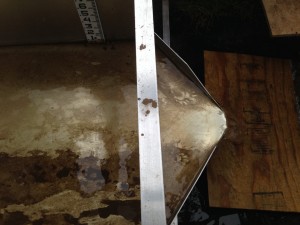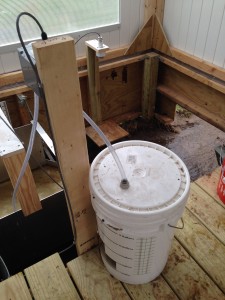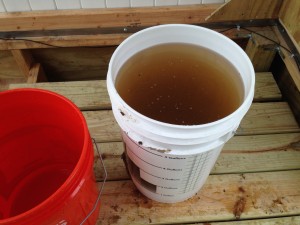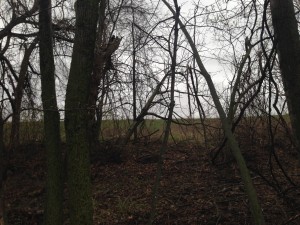A very important aspect of our project is the farmer-directed monitoring we do. It’s a critical way for all of us to understand the dynamics of the systems we’re working within. Over time, we also hope it helps us know whether we’re making any progress.
My UWEX colleague Paul Kivlin, a nutrient management specialist, leads our monitoring work, but he’s been on other duties recently so I’ve had the good luck of getting to do some of the grunt work. Yesterday I headed up to the Hay River watershed, in Dunn County, to check what’s been going on at a field monitor installed at Rick Lohfink’s farm.
 (The monitors are made from modified calf-hutches)
(The monitors are made from modified calf-hutches)
We have four of these in the watersheds, and one about to be constructed. As you can (sort of) see from the picture, they are designed so that water flowing off a field (when the snow is melting, or when we get a lot of rain) is channeled into the hole in the base of the shed, through a flume, and then out the other side.
 (Water flowing through the flume. If you look closely, you can see the tracks of a curious raccoon.)
(Water flowing through the flume. If you look closely, you can see the tracks of a curious raccoon.)
The monitors have equipment to track the volume of water flowing through the flume, and when water is running, a pump regularly sucks up a sample and deposits it into a bucket. We can track all of this remotely (there’s a cell phone inside that’s beaming the info to us) and collect the samples for analysis. That’s what I was doing yesterday.
 (The samples are pumped into this bucket)
(The samples are pumped into this bucket)
 (A lot of water in the bucket after a weekend of rain)
(A lot of water in the bucket after a weekend of rain)
The monitor at the Lohfink farm collects drainage from a nearly 40-acre formerly row cropped field that’s now in a USDA program called “Debt For Nature.” It’s a lot like a Conservation Reserve Program field — a mixture of grasses and forbs, bordered by a row of woody species (see below). The Hay River watershed farmers are interested in comparing what nutrients run out of a “natural” system, versus cropped systems. Without replication we can’t call this a highly scientific comparison, but the variety we have among the monitors (others are on corn and soybean fields with various tillage regimens, as well as one more on a different non-farmed field) gives us some interesting case studies of the different ways water and nutrients move through and across the soil.
 (A row of trees, and beyond, the field from which the water drains)
(A row of trees, and beyond, the field from which the water drains)
We haven’t yet analyzed the data from this season’s spring run-off, but check back soon for a report on what we find.



